Often overlooked, string trees are an integral little piece of equipment for your Fender-style guitar or bass to play properly. Since a flat headstock doesn’t tilt back to give each string the proper break angle, a string tree (or string guide/retainer) applies downward pressure to the string, ensuring it stays properly seated in its slot on the nut. If each string isn’t seated, it could rattle and buzz within its respective nut slot, or even pop out of the nut altogether. A correctly positioned string tree can help with intonation and sustain, essentially pinning the string down permanently at the nut the way you’d pin a string against a fret. Without a string tree, or with an incorrectly placed string tree, a string won’t sound as clear or as properly intonated as it should.
Generally speaking, the low E and A strings on a standard-tuned Fender-style guitar will not need string trees because the distance they travel from the nut to the tuner post is relatively short, providing the necessary break angle. The D, G, B and high E strings travel a longer distance to their tuning posts, resulting in a lesser break angle and a greater need for the downward pressure provided by a string tree. To be certain, you’ll notice that many Fender-style guitars feature a single string tree for the E and B strings and forego a string tree for the D and G strings. A second string tree for strings D and G (three and four) is widely seen as “optional” among guitarists. Many feel that adding extra string windings around their tuning posts solves the job a string tree would handle. If you notice buzzing on either of those strings, however, a string tree may be your solution.
You honestly could probably go your whole guitar-playing life without even thinking about string trees. They almost always come stock on the models that need them, so they probably won’t cross your mind unless you have an issue with one. If a string tree is too loose, or comes off altogether, you may experience annoying buzzing, or have strings become unseated from the nut. If you’re playing a guitar with a tremolo or Floyd Rose, certain types of string trees — or a tree that’s too restrictive — can hinder the string from returning to the correct pitch after releasing the tremolo arm.
- Butterfly-style String Tree
- Barrel-style String Tree
- Disc-style String Tree
If you’re building your own guitar, or want to mod your string-tree-equipped guitar to better suit your playing style, it’s helpful to know the different types of string trees. Most commonly found on Fender guitars and basses are metal butterfly, barrel and disc-style string trees. These get the job done for a majority of players, but there are other options. If you do a lot of bending or use excessive tremolo, the friction created by the metal-on-metal contact of the string scraping against the string tree can cause tiny hang-ups that ultimately affect the string’s ability to return to pitch. A couple of ways to remedy this situation are to use a graphite string tree, which provides a more slippery point of contact for the string to slide against, or a string tree with built-in rollers, allowing the string to move freely while still receiving the downward pressure needed for its break angle.
- Graphite String Trees
- Roller String Trees
While string trees may not be the first thing to cross your mind when you’re shopping for or building your dream guitar, they play an important role in its playability and intonation. While the style and structural integrity of the straight headstock is preferred by a myriad of players — these unassuming little trees are the secret keys to its success.

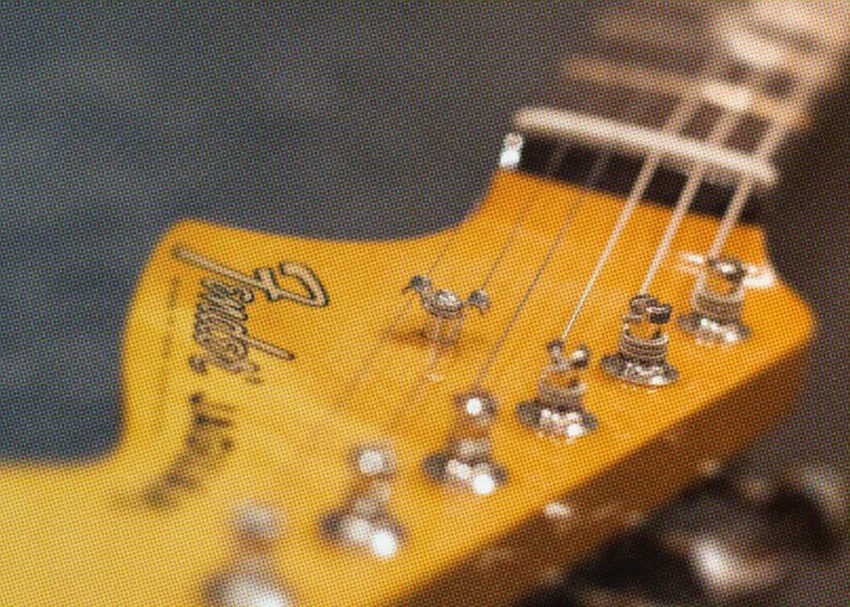
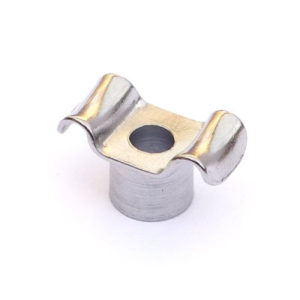
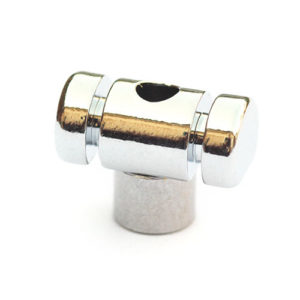
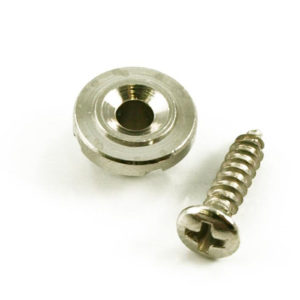
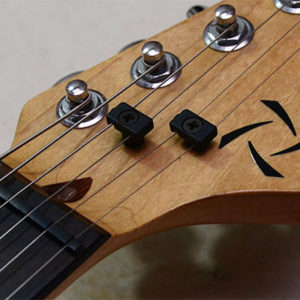
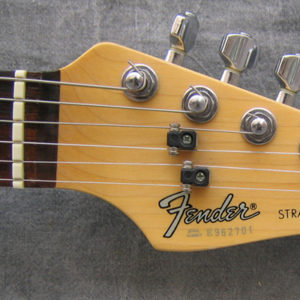


Leave a Reply